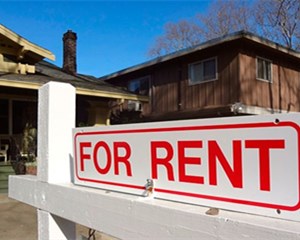Over the long run, however, economic theory suggests that rents and prices should move in tandem (ie, the ratio of house prices to rents should be stable). If rental growth catches up with prices, that could have a big effect. Rents make up one-fifth of the basket used to calculate "core" personal-consumption-expenditure (PCE) inflation, which excludes food and energy—the gauge most closely watched by the Fed. If annual rent inflation rose to 4% a year—not far off where it was shortly before the pandemic—overall core inflation would rise by 0.5 percentage points.
然而,从长期来看,经济理论表明租金和房价应该同步变动(也就是说,房价和租金之间的比率应该是稳定的)。如果租金增长赶上了房价,那么可能会产生很大的影响。租金在用于计算“核心”个人消费支出(PCE)通胀(不包括食品和能源——美联储最密切关注的指标)的篮子中占了五分之一。如果租金的年通胀率上升到每年4%——和新冠大流行前不久差不多——整体核心通胀率将上升0.5个百分点。
Could this happen as the economy recovers, landlords may hope to make up for lost time. "We expect a rental-market resurgence in 2021," said Zillow, a property firm, in a report in December, "with rents increasing...and demand for rental housing strengthening." A recovery in low-wage employment should boost rents: housing-cost inflation tends to rise when the unemployment rate falls. A survey by the New York Fed in April found that households expected rents to rise by 10% in the coming year, up from expectations of 5%, on average, in 2020.
这会发生吗?随着经济的复苏,房东们可能希望弥补失去的时间。房地产咨询公司Zillow在去年12月的一份报告中表示:“我们预计2021年租赁市场将会复苏,随着租金上涨……租房需求也会加强。”低薪就业的复苏应该会提振房租:当失业率下降时,住房成本通胀往往会上升。纽约联邦储备银行4月份的一项调查发现,美国家庭预计未来一年房租将上涨10%,高于2020年平均5%的预期。

Rental inflation is thus likely to rise in the coming months. But by how much is another question. There are reasons to think the price-to-rent ratio could settle at a permanently higher level. When interest rates are so low, for instance, people are willing to pay more for the right to a given stream of income. American price-to-rent ratios are higher today than in the 1980s, which coincides with declines in real interest rates.
因此未来几个月租金上涨可能会加剧,而上涨多少就是另外一个问题了。购租比可能会永久性保持在较高水平,这么说是有理由的。例如,当利率极低时,人们愿意花更多的钱来获得特定的收入流。如今美国的购租比比上世纪80年代要高,而当时的实际利率正好在下降。
A slower pace of housing construction may also keep price-to-rent ratios higher, suggests a new paper by Christian Hilber of the London School of Economics and Andreas Mense of the University of Erlangen-Nuremberg. In thriving areas where the supply of housing is constrained, buyers may be willing to bid up prices in the expectation of strong rental growth in the future. In recent years America has become worse at building new houses, in part because of tougher land-use regulations.
住房建设步伐的放缓也可能会使房价与租金比率保持在较高水平,伦敦经济学院的克里斯蒂安·希尔伯特和埃尔兰根-纽伦堡大学的安德里亚斯·门斯在一篇新论文中指出。在住房供应有限的繁华地区,购房者可能愿意哄抬房价,因为他们预计未来的租金将强劲增长。近年来美国在建造新房方面的能力越来越差,部分原因是受限于更严格的土地使用规定。
American price-to-rent ratios could of course adjust in another way—through prices falling, rather than rents rising. Just as share prices are more volatile than dividends, house prices are more up-and-down than rents. And Mr Detmeister's historical analysis suggests that two-thirds of any adjustment in price-to-rent ratios tends to fall on prices. In other words, America might be able to have either a strong housing market or quiescent inflation—but not both.
美国的购租比当然可以通过另一种方式进行调整——通过降低房价,而不是调高租金。就像股价比股息更不稳定一样,房价也比租金更起伏不定。德梅斯特的历史分析表明,在任何购租比的调整中,三分之二会趋向于降低房价。换句话说,美国可能要么拥有强劲的房地产市场,要么拥有平静的通胀——但二者不能兼得。
译文由可可原创,仅供学习交流使用,未经许可请勿转载。












